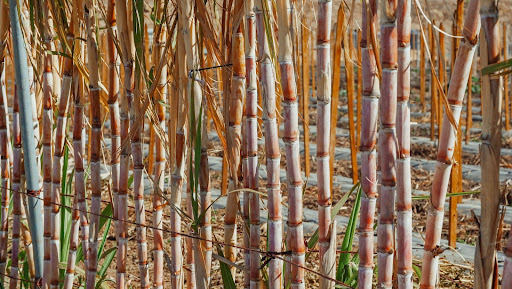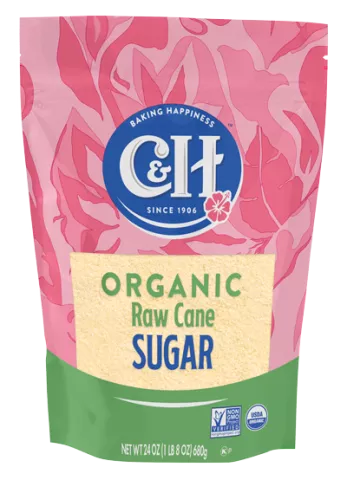Cane Sugar Processing Explained: What Takes Place Inside a Sugar Mill
Cane Sugar Processing Explained: What Takes Place Inside a Sugar Mill
Blog Article
Understanding the Vital Methods and Technologies Used in Modern Walking Stick Sugar Processing
The evolution of walking cane sugar handling has been significantly formed by the assimilation of innovative strategies and technologies that resolve both performance and sustainability. As we explore these important developments, it becomes necessary to check out exactly how they not just improve manufacturing yet also straighten with more comprehensive market patterns and consumer needs, elevating inquiries regarding the future of sugar processing and its implications for worldwide markets.
Historic Context of Walking Cane Sugar Processing
The historic context of cane sugar processing exposes a rich tapestry of farming technology and cultural exchange that has shaped its growth over centuries. Originating in Southeast Asia, sugarcane was cultivated as early as 8000 BCE - Cane Sugar Processing. The procedure of improving and drawing out sugar gained momentum in India, where techniques for formation were improved around the sixth century. This understanding passed through to the Center East, and by the 12th century, sugar ended up being a valued product in Europe, resulting in the facility of sugar plantations in the Mediterranean.

Advanced Extraction Techniques
Performance in cane sugar removal has seen considerable advancements, driven by the need for greater returns and reduced manufacturing costs. This technique not just boosts sugar return yet also minimizes the power needed for handling.
Furthermore, the fostering of membrane layer filtering innovations, such as nanofiltration and turn around osmosis, has reinvented the separation of sugar from pollutants. These techniques enable the selective permeation of sugar particles while preserving larger pollutants, streamlining the removal procedure and decreasing waste.
In addition, the integration of constant removal systems has actually resulted in boosted operational performance. Cane Sugar Processing. These systems keep a constant circulation of walking cane product, ensuring optimum extraction conditions and lowering downtime connected with set handling
Ingenious Refining Technologies
Refining strategies in walking cane sugar handling have gone through a transformative shift, driven by the need for higher purity and improved item quality. Among the most remarkable developments is the adoption of membrane layer filtration technologies, such as ultrafiltration and nanofiltration. These procedures successfully get rid of impurities and colorants without the need for comprehensive chemical therapies, consequently preserving the sugar's all-natural flavor and enhancing its charm.
One more significant advancement is using ion exchange materials, which allow for discerning elimination of undesirable ions from sugar remedies. This technology not only increases the overall purity of the final item but likewise adds to minimized waste and ecological influence.
In addition, innovations in adsorption strategies, utilizing activated carbon and various other advanced materials, have confirmed efficient in decolorizing sugar remedies while preserving optimal high quality. The assimilation of these innovative refining technologies makes sure that makers can create polished sugar with exceptional clearness and preference, satisfying the advancing choices of customers.
Automation and Control Systems
Current improvements in refining modern technologies have paved the method for considerable enhancements in automation and control systems within walking cane sugar processing centers. These systems make use of sophisticated software application and equipment to boost operational effectiveness, reduce human error, and make certain constant item top quality.
Modern automation incorporates numerous components, including sensors, actuators, and programmable reasoning controllers (PLCs), allowing real-time monitoring and control of essential processes. For example, pressure, temperature level, and circulation rates can be specifically managed during removal, clarification, and formation stages, enhancing efficiency and reducing waste.
In addition, progressed data analytics and machine understanding formulas play a critical function in anticipating upkeep, permitting operators to prepare for tools failings prior to they occur. This aggressive approach not just lowers downtime however additionally extends the life expectancy of machinery.
On top of that, automation promotes the implementation of Industry 4.0 principles, empowering sugar mills to attain greater connectivity and data go to this website exchange across procedures. As an outcome, a knockout post decision-making becomes more informed and nimble, eventually enhancing the general competitiveness of walking cane sugar manufacturing. With these innovations, the market is well-positioned to meet growing global demands while maintaining operational excellence.
Sustainability Practices in Sugar Production
Sustainability practices in sugar production have actually ended up being increasingly necessary as the industry looks for to stabilize financial practicality with environmental duty. As consumer understanding grows concerning the ecological effects of agricultural practices, sugar manufacturers are embracing innovative methods to decrease their eco-friendly footprint.
One considerable strategy is the application of precision agriculture methods, which utilize data analytics to maximize resource usage, such as water and fertilizers. This decreases waste and minimizes the impact on local ecological communities. In addition, many manufacturers are transitioning to renewable resource sources, such as biomass from sugarcane by-products, to power their procedures, therefore decreasing dependence on nonrenewable fuel sources.
Water monitoring practices are also crucial; rain harvesting and efficient watering systems help minimize water shortage concerns. Cane Sugar Processing. Furthermore, integrated bug monitoring strategies decrease chemical use, advertising biodiversity and soil health and wellness
Business social duty campaigns are arising, with companies investing in neighborhood neighborhoods and making certain reasonable labor practices. By accepting these sustainability techniques, the sugar sector not just improves its track record but additionally adds to an extra sustainable farming landscape, paving the method for future generations.

Final Thought
In recap, modern cane sugar processing incorporates an array of advanced methods and technologies that dramatically boost efficiency, return, and sustainability. Jointly, these improvements position the walking stick sugar sector to fulfill contemporary needs while addressing vital international obstacles.
The evolution anchor of walking stick sugar processing has actually been substantially formed by the combination of advanced methods and innovations that address both performance and sustainability.The historic context of cane sugar processing discloses a rich tapestry of agricultural development and cultural exchange that has shaped its growth over centuries. Technologies in milling and refining emerged, laying the foundation for modern walking stick sugar processing.Refining strategies in walking stick sugar processing have gone through a transformative shift, driven by the need for higher purity and enhanced item quality.In recap, modern-day walking cane sugar handling integrates an array of innovative strategies and technologies that dramatically enhance sustainability, yield, and efficiency.
Report this page